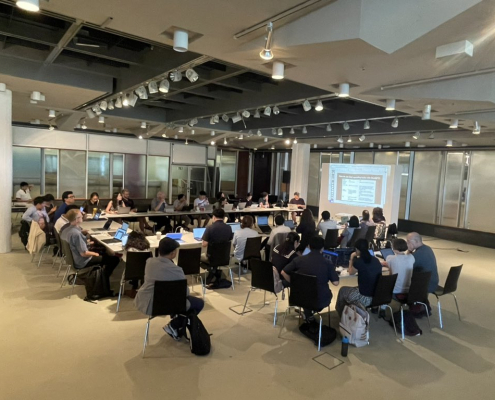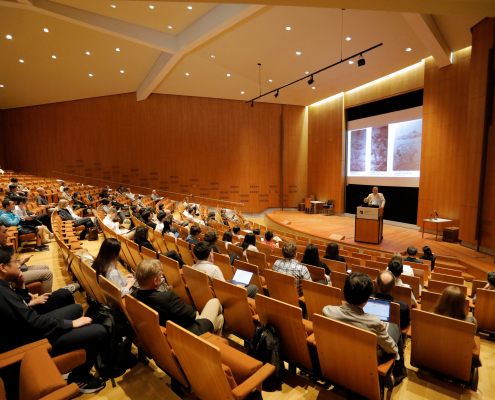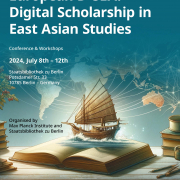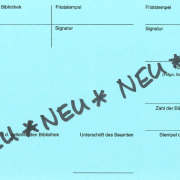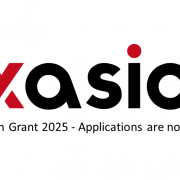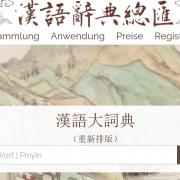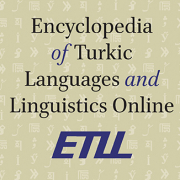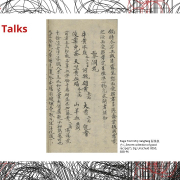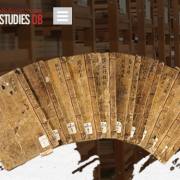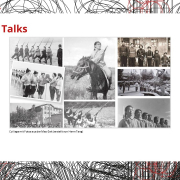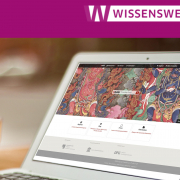(See English below)
Unser Stipendiat Herr TANG Sanjiao (University of Auckland, Neuseeland) hält am 14. Mai ab 18 Uhr einen Vortrag zu seinem aktuellen Forschungsthema „Lives in Mao-Era Militias under the Mass Mobilisation and Militarisation Context“ im Simon-Bolivar-Saal bzw. online via Webex. Der Vortrag findet in Kooperation mit der SBB Wissenswerkstatt statt, da Herr Tang Sanjiao derzeit im Rahmen eines Forschungsaufenthaltes, finanziert über das Stipendienprogramm der Stiftung Preußischer Kulturbesitz, an der Staatsbibliothek forscht.
In China today, the younger generations are having militarised experiences. Admittedly, military training is a routine thing for students in many countries. Currently, the reviving nationalist trend is making the Chinese young people’s military training different. On the video-sharing platforms popular in China, such as Douyin (the Chinese version of TikTok), with keywords like “students’ military training,” tens of thousands of videos are well-received. As vividly shown in the videos, the Chinese young people, including children in kindergartens, were learning to have simulative combat with imaginary enemies. Indulging them in burning passion, the younger generations feel as if they were glorious soldiers fighting for the nation.
Surprisingly, many of these young people’s grandparents had paralleling militarised lives when they were young. It was the experiences of being involved in the Mao-era mass mobilisation and militarisation, becoming members of Mao’s militias. In the early 1960s, despite the famine causing tens of millions of deaths, the country was celebrating its militias nationwide maintaining a scale of over two hundred million members. In the mid-1960s, Chinese residents were mobilised to “prepare earlier for fighting a war, a big war, and even a nuclear war.” Resulting from the mass mobilisation and militarisation, as demonstrated by a well-known slogan, seven hundred million Chinese people had all “become soldiers” (qiyi renmin qiyi bing). While it was rhetorically exaggerating, it indicated that the younger generations in Mao’s China were involved as the core forces in the militias.
Through revisiting the experiences of joining Mao-era militias, this research aims to reconsider the legacies of Mao-era mass mobilisation and militarisation. How did the lives in militias shaped their adolescence and early adulthood physically, psychologically, and profoundly? Benefitting from unique sources in the Berlin State Library, this project intends to answer these questions.
The results of the project contribute to understanding the mass-based legacies of Mao-era mobilisation and militarisation. Paying attention to the transgenerational resonance on young people’s involvement in war-preparing campaigns, it helps rethink today’s China, which is an urgent task for not only academics but also analysts and policy-makers worldwide.
Die Vortragssprache ist Englisch. Wir bitten Sie um Voranmeldung für den Vortrag unter: ostasienabt@sbb.spk-berlin.de und eine kurze Mitteilung, falls Sie einen barrierefreien Zugang benötigen. Die Veranstaltung wird gefilmt.*
Der Vortrag wird darüber hinaus via Webex gestreamt und aufgezeichnet. Sie können am Vortrag über Ihren Browser ohne Installation einer Software teilnehmen. Klicken Sie dazu unten auf „Zum Vortrag“, folgen dem Link „Über Browser teilnehmen“ und geben Ihren Namen ein.
Alle bislang angekündigten Vorträge finden Sie hier. Die weiteren Termine kündigen wir in unserem Blog und auf unserem X-Account an.
—
The scholarship holder Mr. TANG Sanjiao (University of Auckland, New Zealand) will give a lecture on his current research topic „Lives in Mao-Era Militias under the Mass Mobilisation and Militarisation Context“ in the Simon-Bolivar-Saal and online via Webex on 14 May from 6 pm. This lecture will take place in cooperation with the Wissenswerkstatt, as he is currently working at the Staatsbibliothek as part of a research stay funded by the grant program of the Stiftung Preußischer Kulturbesitz.
In China today, the younger generations are having militarised experiences. Admittedly, military training is a routine thing for students in many countries. Currently, the reviving nationalist trend is making the Chinese young people’s military training different. On the video-sharing platforms popular in China, such as Douyin (the Chinese version of TikTok), with keywords like “students’ military training,” tens of thousands of videos are well-received. As vividly shown in the videos, the Chinese young people, including children in kindergartens, were learning to have simulative combat with imaginary enemies. Indulging them in burning passion, the younger generations feel as if they were glorious soldiers fighting for the nation.
Surprisingly, many of these young people’s grandparents had paralleling militarised lives when they were young. It was the experiences of being involved in the Mao-era mass mobilisation and militarisation, becoming members of Mao’s militias. In the early 1960s, despite the famine causing tens of millions of deaths, the country was celebrating its militias nationwide maintaining a scale of over two hundred million members. In the mid-1960s, Chinese residents were mobilised to “prepare earlier for fighting a war, a big war, and even a nuclear war.” Resulting from the mass mobilisation and militarisation, as demonstrated by a well-known slogan, seven hundred million Chinese people had all “become soldiers” (qiyi renmin qiyi bing). While it was rhetorically exaggerating, it indicated that the younger generations in Mao’s China were involved as the core forces in the militias.
Through revisiting the experiences of joining Mao-era militias, this research aims to reconsider the legacies of Mao-era mass mobilisation and militarisation. How did the lives in militias shaped their adolescence and early adulthood physically, psychologically, and profoundly? Benefitting from unique sources in the Berlin State Library, this project intends to answer these questions.
The results of the project contribute to understanding the mass-based legacies of Mao-era mobilisation and militarisation. Paying attention to the transgenerational resonance on young people’s involvement in war-preparing campaigns, it helps rethink today’s China, which is an urgent task for not only academics but also analysts and policy-makers worldwide.
The lecture will be held in English. We kindly ask you to register in advance at: ostasienabt@sbb.spk-berlin.de, and to let us know if you need barrier-free access. The event will be filmed.*
The lecture will also be streamed and recorded via Webex. You can take part in the lecture using your browser without having to install a special software. Please click on the respective button “To the lecture” below, follow the link “join via browser” (“über Browser teilnehmen”), and enter your name.
You can find all previously announced lectures here. We will announce further dates in our blog and on X.
*Mit Ihrer Teilnahme an der Veranstaltung räumen Sie der Stiftung Preußischer Kulturbesitz und ihren nachgeordneten Einrichtungen kostenlos alle Nutzungsrechte an den Bildern/Videos ein, die während der Veranstaltung von Ihnen angefertigt wurden. Dies schließt auch die kommerzielle Nutzung ein. Diese Einverständniserklärung gilt räumlich und zeitlich unbeschränkt und für die Nutzung in allen Medien, sowohl für analoge als auch für digitale Verwendungen. Sie umfasst auch die Bildbearbeitung sowie die Verwendung der Bilder für Montagen. / By participating, you grant the Stiftung Preußischer Kulturbesitz and its subordinate institutions free of charge all rights of usage of pictures and videos taken of you during this lecture presentation. This declaration of consent is valid in terms of time and space without restrictions and for usage in all media, including analogue and digital usage. It includes image processing and the usage of photos in composite illustrations. German law will apply.
